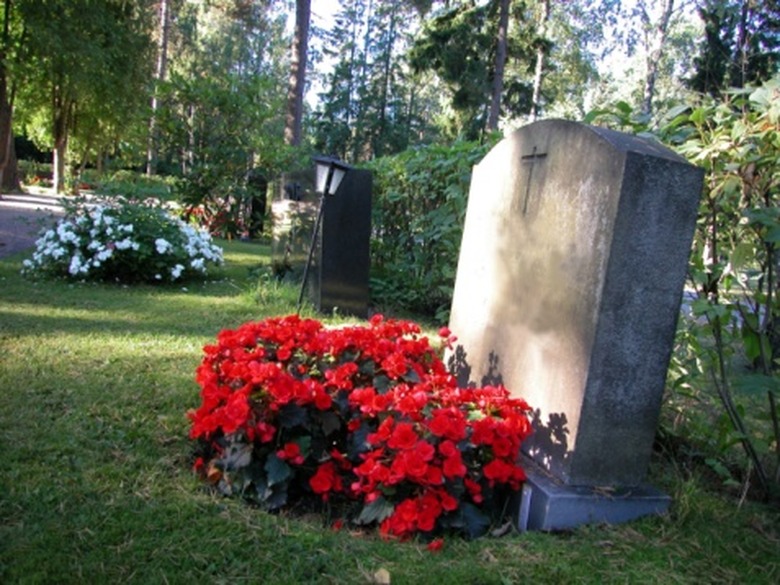Flowers To Plant On A Gravesite
Although many cemeteries no longer allow you to plant flowers around grave sites, you may be fortunate to have a loved one buried where you are able to grow flowers as a remembrance. Your choice of flowering plants may depend on whether the cemetery provides grave site plant care or if you will need to periodically visit the grave to maintain the beauty of your plants. Either way, growing flowers at the grave site of a loved one is a beautiful tribute.
Bulbs
Flowering bulbs can be an ideal solution for flowers planted at a grave site. Bright and cheery springtime bulbs like daffodil, lily of the valley, hyacinth and crocus can be planted once and reappear year after year with no additional maintenance required. Summer-blooming bulbs such as day lilies, anemones, freesias, calla lilies, and crocosmia are also well suited for grave sites. Frost-tender bulbs, such as gladiolus and dahlias, should be avoided if the cemetery is located in USDA Hardiness Zones 7 and lower, unless you live nearby and can go to the grave and lift the bulbs from the ground in the fall and replant again the following spring.
- Although many cemeteries no longer allow you to plant flowers around grave sites, you may be fortunate to have a loved one buried where you are able to grow flowers as a remembrance.
- Frost-tender bulbs, such as gladiolus and dahlias, should be avoided if the cemetery is located in USDA Hardiness Zones 7 and lower, unless you live nearby and can go to the grave and lift the bulbs from the ground in the fall and replant again the following spring.
Geraniums
Geraniums have long been a traditional plant at headstones, partly because of the easy care and continual blooming of bright, cheerful flowers. With new hybrid geraniums being developed, you can find a hardy variety that will bear light frost. Hybrid geraniums also offer you a wide selection of blossom colors, rather than the traditional reds or pinks. If you decide to plant geraniums at a grave site, remember that the plant should have spent flower heads clipped to continue producing blooms, and, in warmer regions, geranium plants can grow quite large, which can obscure the headstone.
Chrysanthemums
Colorful chrysanthemums are available in so many blossom and plant sizes that you can plant an assortment of chrysanthemums at your loved one's grave to have blooms at different times throughout the summer and fall. Most chrysanthemum varieties are cold-hardy and can remain in the ground to return the next growing season. There will be minimal maintenance required with these plants, mostly deadheading spent blooms and cutting the plant stems back at the end of the season.
- Geraniums have long been a traditional plant at headstones, partly because of the easy care and continual blooming of bright, cheerful flowers.
- If you decide to plant geraniums at a grave site, remember that the plant should have spent flower heads clipped to continue producing blooms, and, in warmer regions, geranium plants can grow quite large, which can obscure the headstone.
Roses
People are drawn to planting rose bushes at grave sites, particularly if the person was a gardener or loved a particular rose. Many grave sites will have rose trees planted, as they are easier for maintenance workers to work around without too much effort. A traditional rose bush will need extra care, as it would in your garden. Pruning is the main issue and many cemeteries will not extend themselves to do this. If you decide you want roses at a grave site, you will need to visit the grave periodically to maintain the bush, or select miniature rose bushes or rose trees.
Wildflowers
Wildflowers can be perfect for flowers at a grave site since the wildflowers naturally thrive in the region the grave is located, and wildflowers will reseed for yearly blooming. Many annual plants, though not always considered wildflowers, also have the ability to reseed and will reappear yearly. Annual flowers like marigolds, saliva, zinnias and cosmos will flourish for many years at a grave site.
- People are drawn to planting rose bushes at grave sites, particularly if the person was a gardener or loved a particular rose.
- Wildflowers can be perfect for flowers at a grave site since the wildflowers naturally thrive in the region the grave is located, and wildflowers will reseed for yearly blooming.
